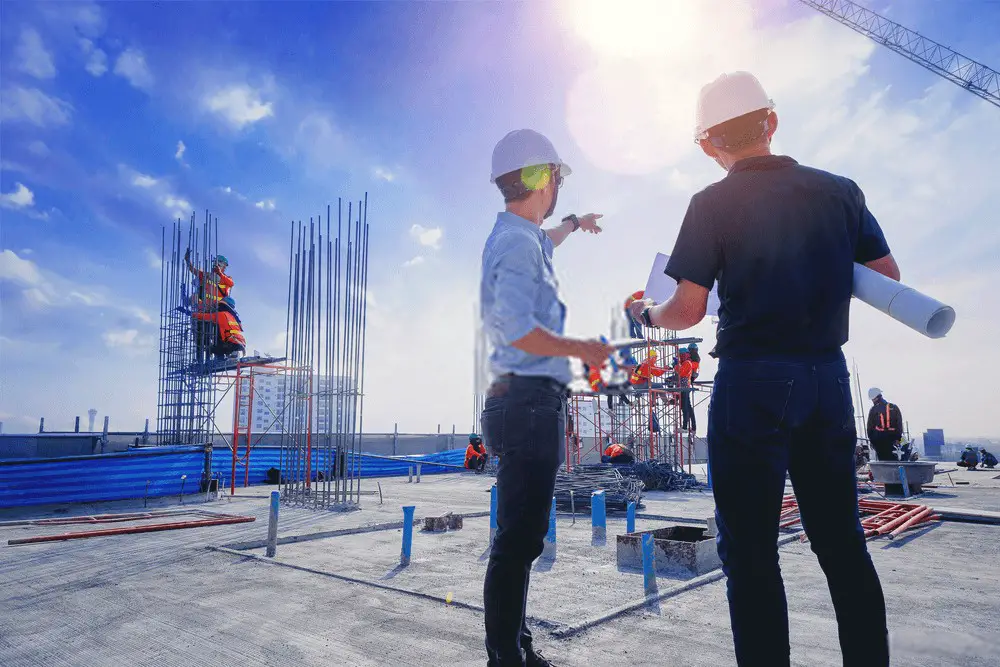The Dynamics Of Construction Safety In Civil Engineering

Civil engineering is concerned with the design, construction, and maintenance of infrastructure. From roads and bridges to airports and skyscrapers, civil engineers ensure that our cities and towns function smoothly. They are responsible for planning, designing, constructing, and maintaining the physical and naturally built environment.
What are the main responsibilities of civil engineers?
Civil engineers are involved in every phase of a project, from the initial planning stages to the final construction and maintenance. Some of the main responsibilities of civil engineers include:
- Designing and planning infrastructure projects
- Overseeing construction sites and ensuring compliance with safety regulations and codes
- Managing budgets and schedules
- Collaborating with architects, contractors, and other engineers
- Conducting feasibility studies and cost analyses
- Testing and evaluating materials
- Providing technical advice and assistance to clients and colleagues
- Assessing risks and developing contingency plans
What are some of the key skills required for civil engineers?
Civil engineers require a wide range of technical and interpersonal skills to excel in their roles. Some of the key skills and abilities required include:
- Strong mathematical and analytical skills
- Excellent communication and collaboration skills
- Expertise in AutoCAD and other engineering software
- A broad and deep understanding of materials science and engineering principles
- Knowledge of relevant safety and building codes
- Leadership and management skills
- Problem-solving and critical thinking abilities
What are some of the key challenges facing today's civil engineers?
Civil engineers face a number of challenges as they work to design, build and maintain infrastructure that meets the needs of the population. Some of the key challenges include:
- Climate change, and the need to design infrastructure that is resilient to changes in weather patterns
- Population growth and urbanization, which place increasing demands on the infrastructure and require more innovative approaches to design and construction
- Aging infrastructure, which requires significant investment to maintain and upgrade
- The need to balance economic and environmental concerns in infrastructure design and construction
- The rapid pace of technological change, which requires civil engineers to stay up-to-date with the state of the art in materials science, engineering principles, and construction techniques, among other areas.
What are some of the new and emerging technologies in civil engineering?
Civil engineering is a constantly-evolving discipline, and there are many new and emerging technologies that are changing the way we design, build and maintain infrastructure. Some of the most promising technologies include:
- Building information modeling (BIM) software, which allows engineers and architects to collaborate more effectively and efficiently in the design and construction phases
- Sensor networks and real-time monitoring systems, which allow engineers to detect and respond to changes in the environment or performance of infrastructure more quickly and accurately
- 3D printing, which can be used to create prototypes and even entire buildings
- Nanotechnology, which has the potential to create materials that are stronger, lighter and more durable than conventional building materials
- Sustainable materials and building practices, which help to reduce the environmental impact of construction and make infrastructure more resilient to the effects of climate change.
How can civil engineers stay up-to-date with new technologies and advances?
Given the rapid pace of technological change in civil engineering, it is important for engineers to stay up-to-date with the latest advances in the field. Some ways to do this include:
- Participating in continuing education courses and conferences
- Reading peer-reviewed journals and technical reports
- Networking with colleagues and other professionals in the field
- Joining professional societies and associations, such as the American Society of Civil Engineers (ASCE), to stay informed about new initiatives and research
- Seeking out mentorship opportunities with more experienced engineers
Closing Thoughts
Civil engineering is a critical discipline that plays a vital role in shaping the built environment around us. Whether designing new infrastructure, maintaining the existing infrastructure, or responding to emerging needs and challenges, civil engineers are at the forefront of innovation and change. With the right mix of technical skills, leadership abilities, and a commitment to lifelong learning, civil engineers can make a real difference in the world around them.


Post a Comment for "The Dynamics Of Construction Safety In Civil Engineering"